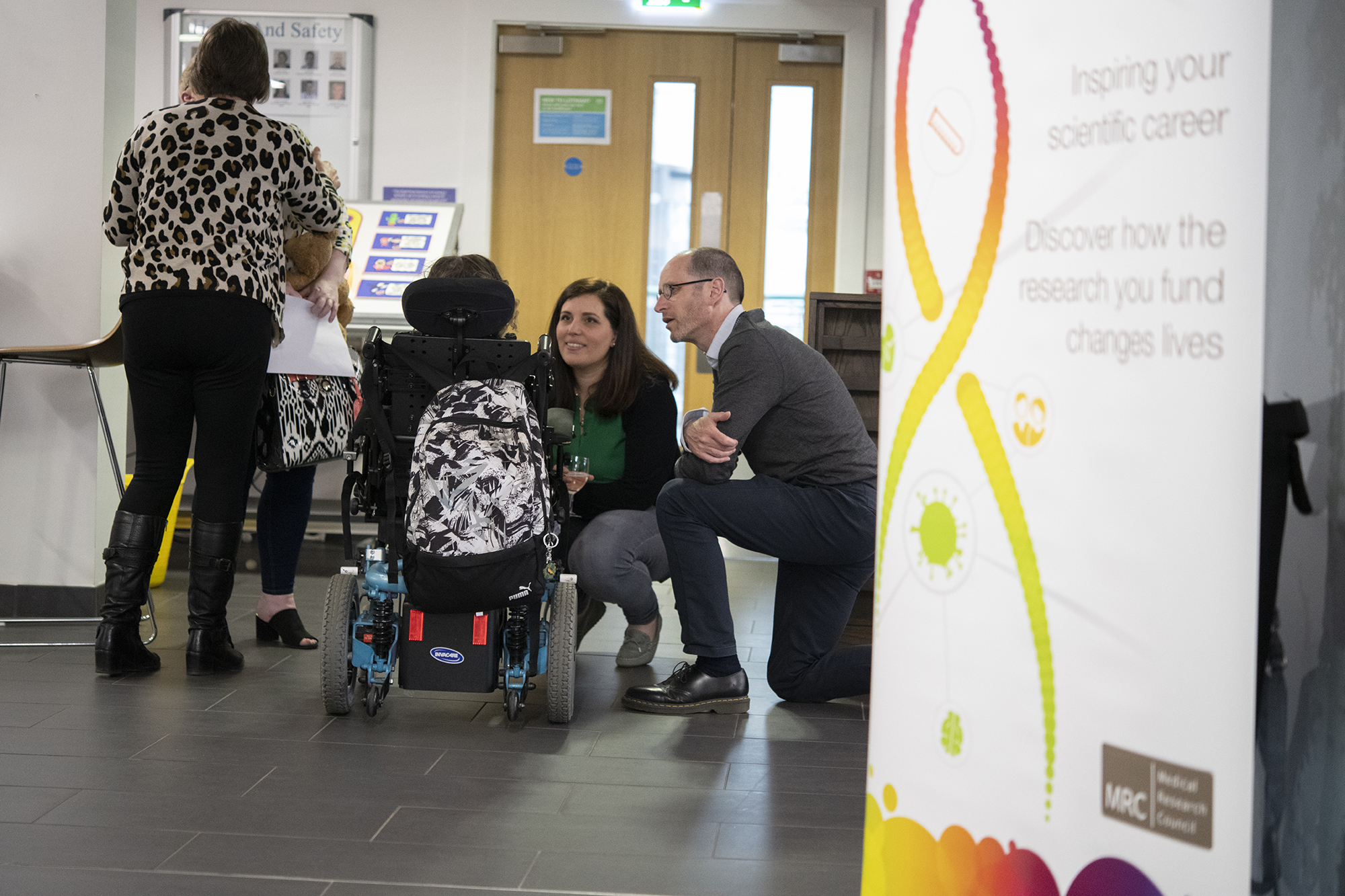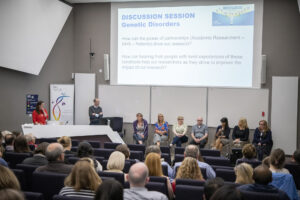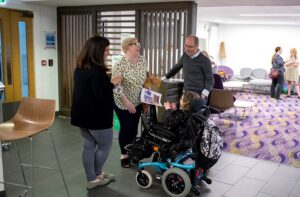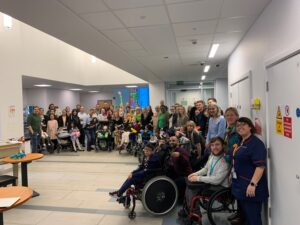10 years on: Yanick Crow’s reflections on the type I interferonopathies

In a landmark review published in Nature Reviews Immunology this week, The type I interferonopathies: 10 years on, Yanick Crow and Dan Stetson (University of Washington) look back at what has been learned since Yanick first coined the term in 2011, and how the field may develop in the years ahead.
To mark this milestone, we speak to Professor Crow to find out how he came to specialise in the genetics of rare diseases, and how his research over the past decade has defined and evolved our understanding of type I interferonopathies and the diagnosis and management of people living with these rare, life-changing conditions.
Can you tell us a bit about your background and how you came to specialise in this field?

“I am a medical doctor specialising in rare diseases – a clinical geneticist. I am also a researcher, running a laboratory split between the University of Edinburgh and the Institute Imagine in Paris.
“Like a lot of things in life, I ended up where I am professionally partly through chance – when I was planning to do a PhD many years ago (1998), it was decided that I might study a group of children with a very severe neurological disease called Aicardi-Goutières syndrome (AGS).
“Together with the MRC Human Genetics Unit’s (HGU) Andrew Jackson (we were doing PhDs in the same lab at the same time), we were able to start to decipher the genetic basis of AGS, and appreciate the link between the disease and an up-regulation of type I interferon signalling.
“After that, I began to think that the disease mechanism underlying AGS that we had uncovered might be important in a broader range of disorders, and so in 2011 I coined the term the ’type I interferonopathies’, hypothesising that there would be other such disorders to discover if we went looking for them.”
What was the significance of the classification of type I interferonopathies back in 2011?
 “As the COVID-19 pandemic has shown, we are at war with viruses and other pathogens – a war to the death. Over evolutionary time we have developed sophisticated systems to recognise invading viruses that manage to get inside our cells. These systems rely on the sensing of viral nucleic acids – DNA and RNA. Once a virus is sensed, the immune system responds by producing an extremely strong ‘biological disinfectant’ called interferon – which is very good at killing germs.
“As the COVID-19 pandemic has shown, we are at war with viruses and other pathogens – a war to the death. Over evolutionary time we have developed sophisticated systems to recognise invading viruses that manage to get inside our cells. These systems rely on the sensing of viral nucleic acids – DNA and RNA. Once a virus is sensed, the immune system responds by producing an extremely strong ‘biological disinfectant’ called interferon – which is very good at killing germs.
“These systems tend to work pretty well. However, they come at a potential risk – because our own cells are full of our own DNA and RNA. We realised that AGS, and other related diseases, might occur as a result of a misrepresentation of self nucleic acids for a virus – hence explaining the chronic production of interferon (in the absence of a virus). A little bit of ‘biological disinfectant’ in the right place for the right length of time is good. However, the production of high levels of interferon all of the time is bad news, causing lots of downstream effects including cell death.
“The other part of the story relates to the fact that, remarkably, there is no routine test that doctors use in clinical medicine to tell if a disease is characterised by ‘too much interferon’. Essentially then, if you don’t look you don’t find; and, if you do find something you don’t necessarily appreciate its nature (i.e. that it is associated with enhanced interferon signalling).
“So, the USP of our lab has been to develop research screening assays to detect ’too much interferon’, and to use these tests to ‘promiscuously’/‘agnostically’ screen patients with all sorts of different clinical features. Once we identify a patient demonstrating persistent up-regulation of interferon signalling, we then go looking for the molecular basis of their disorder. This strategy has allowed us to discover some surprising things – that clinicians and scientists had never suspected previously.”
What have we learned in the 10 years since – what do we know about type I interferonopathies and what have they taught us about immune function?

“Briefly, we have learned that there are now at least 40 Mendelian type I interferonopathies, of which we have played a leading role (13), or provided a helping hand (8), in defining. The majority of these diseases relate to nucleic acid metabolism and interferon signalling – just as our hypothesis predicted.
“Our studies, and those of other groups, have provided information on a previously unrecognised role in interferon signalling of a number of these genes/proteins, and by considering the genes and proteins involved as a group, we have begun to appreciate the ways in which the body normally avoids mounting an anti-viral response against self.
“Importantly, and gratifyingly with my clinical hat on, these discoveries have also led us to think about ‘rational therapies’, and begin to treat patients with ‘anti-interferon’ molecules.”
How would you describe your research at the MRC Human Genetics Unit?
“The HGU is a really special place, and we are lucky to be here. The most important thing is that we have the chance to explore deeply the biology of the diseases that we are studying – because of the scientific excellence of our colleagues and the facilities that are available to us.
“This kind of work takes intelligence, dedication, finance, time and a bit of luck – the HGU provides the first four ingredients, and we just have to keep our fingers crossed for the last. Still, as someone once said, the harder I work, the luckier I get!”
Where do you hope research will take our understanding over the next decade, and what hopes could this give people living with type I interferonopathies and their families?

Credit: Birmingham Children’s Hospital
“Essentially, I would hope to further expand the list of diseases that fit into the type I interferonopathy category, and to better understand the biology of these diseases. We know that interferon is essential in fighting infection, and we are also learning that it can have an important role in other settings such as cancer. So, by studying these rare diseases we are learning a lot of interesting things about biology more generally.
“Mendelian diseases represent a really powerful way of de-convoluting complex biological problems – because you start off from a situation of a defined genetic lesion in the human setting, and the very fact that this mutation is associated with a disease categorically demonstrates that the gene/its encoded product has a physiologically relevant role in human health (and is therefore worthwhile studying).
“Of course, as I have already said, as a clinician, I also hope that understanding what’s going on will inform our attempts to treat these horrid diseases. Everything takes time, but this is a worthy goal to have, and I know it is an important one not just for me, but also for the wonderful colleagues that I work with in my group and that we collaborate with.”
Read the paper published in Nature Reviews Immunology, 20 October 2021, here:
The type I interferonopathies: 10 years on,
https://doi.org/10.1038/s41577-021-00633-9
To learn more about Professor Crow’s work, Aicardi-Goutières syndrome and the type I interferonopathies, visit the MRC Human Genetics Unit website: Yanick Crow Research Group




Yannick this is Carol Keddie. Your dad’s sister, was Carol Martin.Would love to hear from you.Im living off grid in a beautiful spot in Qld.Phone 0477277713.or 39 Ryan reagon road neumgna qld 4614.Do hope to hear from you.Im 74 now and your in my prayers.Im really like Peter always love d my elder brother so many good memories from my childhood.He always looked out for me and sadly l was not in England to look out for him when l should have been.